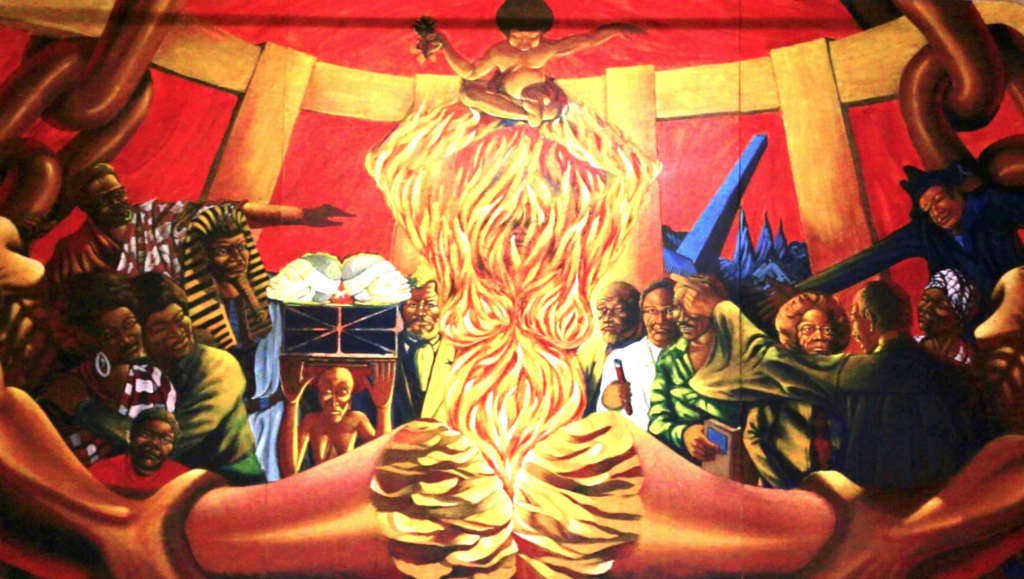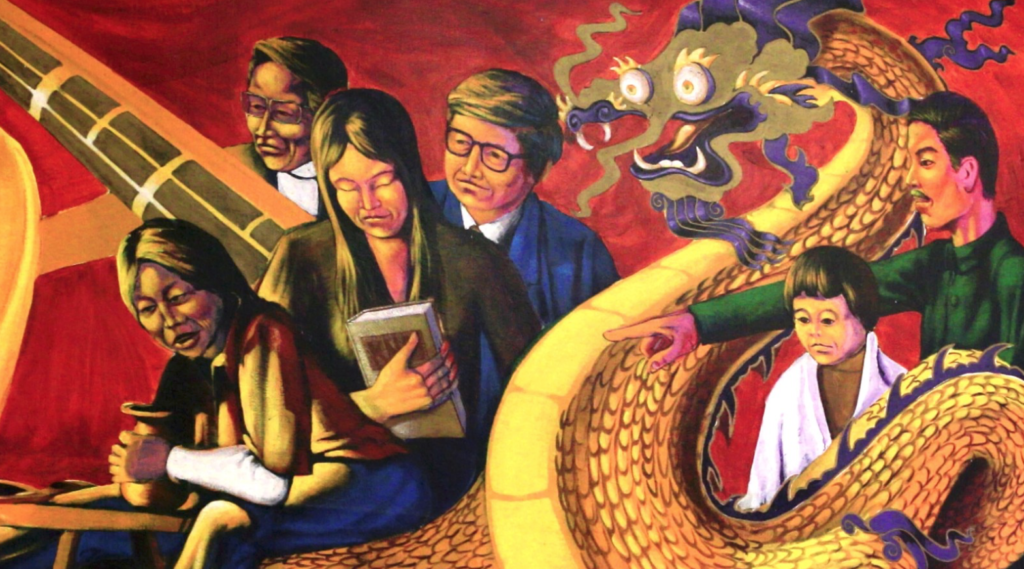George Washington High School
600 32nd Avenue

This three panel mural by Dewey Crumpler is a direct response to the 1960s controversy over the Life of Washington murals.
However, even these stirred controversy in their day, not with the subject, but with the artist. The Art Commission, and the students had far different opinions as to the qualifications of the chosen artist. It is a fascinating story which you can read HERE in Crumplers own words.
 In 1993 Crumpler wrote this about his murals: “In 1966 the student wing of the Black Panther Party saw some murals in the hallways at Washington High by Victor Arnautoff. They didin’t quite understand what he was doing, but they saw slaves in the murals so the reacted violently – carving into the murals and throwing black ink on them. The city and the school became very upset and concerned because the didn’t want these historic murals to be defaced. The black students said that if you want those murals saved then you better have somebody paint some murals that can go in the school that speak about the positive contributions and strengths of African Americans and not this slave stuff.
In 1993 Crumpler wrote this about his murals: “In 1966 the student wing of the Black Panther Party saw some murals in the hallways at Washington High by Victor Arnautoff. They didin’t quite understand what he was doing, but they saw slaves in the murals so the reacted violently – carving into the murals and throwing black ink on them. The city and the school became very upset and concerned because the didn’t want these historic murals to be defaced. The black students said that if you want those murals saved then you better have somebody paint some murals that can go in the school that speak about the positive contributions and strengths of African Americans and not this slave stuff.
In fact, Victor Arnautoff was a communist and was simply trying to demonstrate that the Father of America owned slaves. He had studied in Mexico with Diego Rivera. The black students didn’t want to hear none of that and they put on a search for an artist. The students saw my work and related to it because it was very political. Therefore they said I had to be the one to paint the mural
The school district went along with the students, but sone members of the Art Commission said I was too young and inexperienced in painting murals. When they held up the process I went all over the country studying murals. I was able to travel a lot, because my father worked for Pan-Am
In 1968 I went to Detroit, Chicago and New York. I went to Chicago to talk to Bill Walker. I went to look at all the murals they were doing. They made me feel that was not what I wanted to do. They were painting what was going on in the streets. I felt that they were too much like posters. I was more interested in something that had so much power that it would be like African-American music, which speaks to the right this moment but is really beyond time.
Starting in 1969 or 1970, I went off to Mexico for about two years, trying to study mural painting. Siqueiros for me was the greatest painter and the greatest muralist I ever saw. That was what I wanted to do in mural painting.
The murals at Washington High School did not just deal with African Americans. I and several students in the Black Panther Party felt the mural should be broader, even though none of the students from the other communities participated in forcing this issue.”

*
Born in 1949, Crumpler is a Professor of Art and Art History at San Francisco Art Institute.
Crumpler has other murals in San Francisco that are still standing.